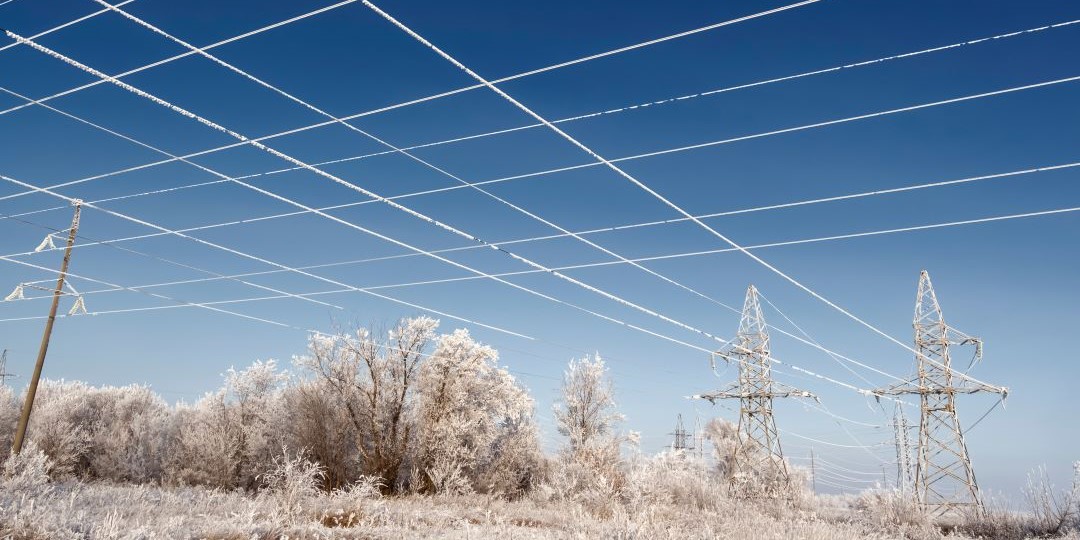By Dale Tarr, NERC Reliability Specialist
With most of the country having already experienced bouts of severe weather, there are several valuable take-aways from the recently published NERC 2022-2023 Winter Reliability Assessment. The assessment is a multi-regional overview of transmission adequacy, generation resources and operational reserves.
The Assessment is broken up into several sections with general areas such as key findings, recommendations, and risk highlights along with specific detailed areas covering sub-areas within each of the NERC regions. The process to create this overview originated from a collaborative evaluation between the Regional Entities, the Reliability Assessment Subcommittee and NERC staff with demand vs. resource projections obtained from the various assessment areas. The goal of the assessment is to be an independent source of information to planners, operators, regulatory bodies and industry leadership for aiding in acting towards enhancing Bulk Power System reliability.
In the Key Findings section, there is a summary evaluation of generation resources and transmission adequacy to meet projected peak demands and operating reserves. The evaluation points out potential concerns with operations and capacity and highlights specific areas of risk.
For example, in the ERCOT region, continued risk remains for a serious amount of generation where lengthy periods of cold weather could cause forced outages where facilities and fuel resources are not designed nor have been retrofitted for weather extremes. Additionally, an Environmental Protection Agency hazardous coal ash disposal regulation, that expired in 2022, could impact two coal-fired units providing a total of 1,477 MW in the final weeks of winter.
In the Midcontinent ISO (MISO), the reserve margins have lowered by over 5%. It’s projected that an extreme cold-weather event extending southward could result in excessive outages related to inadequate weatherization and lack of fuel for natural-gas-fired generation.
SERC-East has a similar evaluation to that of ERCOT where an extreme cold-weather event could result in excessive outages and result in an area wide emergency with the loss of reserves. In WECC-Alberta and NPCC-Maritimes, peak demand is projected to keep growing causing capacity constraints. While Alberta has sufficient capacity currently, high rates of forced outages due to extreme cold temperatures for long periods are likely to lead to energy emergencies.
The NPCC-New England is facing capacity constraints with peak demand generation competing with consumer heating usage. The fuel delivery system and limited liquid fuels increase the risk for the fuel-based generation and as in the other at-risk regions may lead to electric system emergencies in extreme cold-weather situations.
The key findings in the Winter Reliability Assessment are followed up with recommendations and risk highlights. NERC advocates Balancing Authorities and Reliability Coordinators working with Generation Owners to establish adequate fuel supplies and conduct surveys early in the season to monitor those adequacies. NERC also encourages policy makers to preserve critical generation resources and take steps to support environmental and transportation waivers for electric load and natural gas conservation. Along with the above, Generation Owners and Operators should implement mitigations targeted in the NERC Level 2 Cold Weather Preparedness Alert II.
Risks highlighted include the fuel supply and inventory risks. Many challenges have occurred in 2022 to add to the seasonal fuel supply replenishment in advance of winter weather. These challenges include global market fluctuations due to the ongoing war between the Ukraine and Russia along with potential rail strikes and continued supply chain issues.
The Reliability Assessment continues with a section devoted to enhancements made in the winter storm of 2021 affected areas. The most impacted areas of ERCOT, MISO and SPP are now requiring generators to conduct implementation of cold weather preparedness plans and providing cold weather operating parameters to their Reliability Coordinators, Transmission Operators and Balancing Authorities for use in their operating plans. Each of these regions also implemented area specific actions to mitigate risk from ERCOT’s procurement of 2,900MW of firm fuel supply resources for the upcoming winter, to SPP’s Winter Preparedness Workshop to inform members of forecasted conditions and review seasonal preparedness steps in operating procedures.
The Assessment concludes with two summary overview sections. Dashboards with each of the subregions’ On-Peak fuel mixes, Highlights, On-Peak reserve Margins, and Risk-Scenario Summaries provide breakdown of regional challenges. Each subregion also has a Demand and Resource Table comparing resource peak demand and supply adequacy from the 2021-2022 winter season versus the 2022-2023 winter season.











